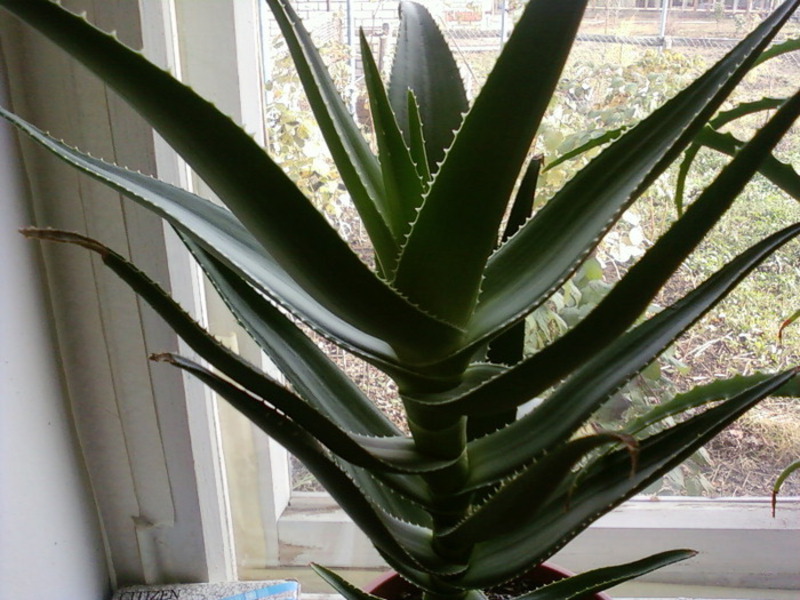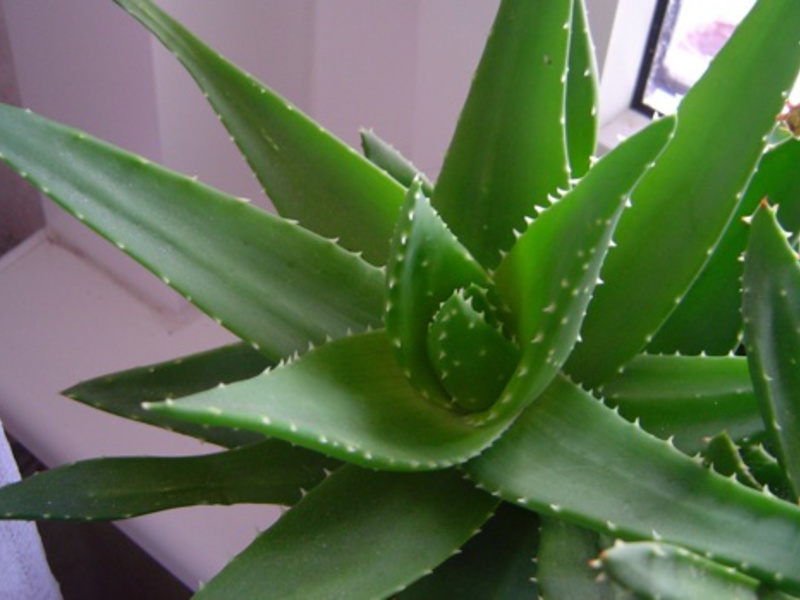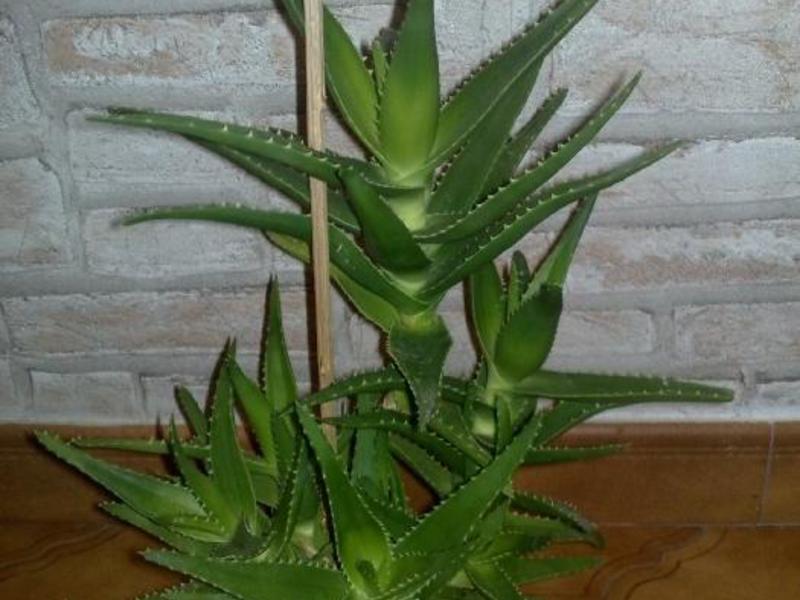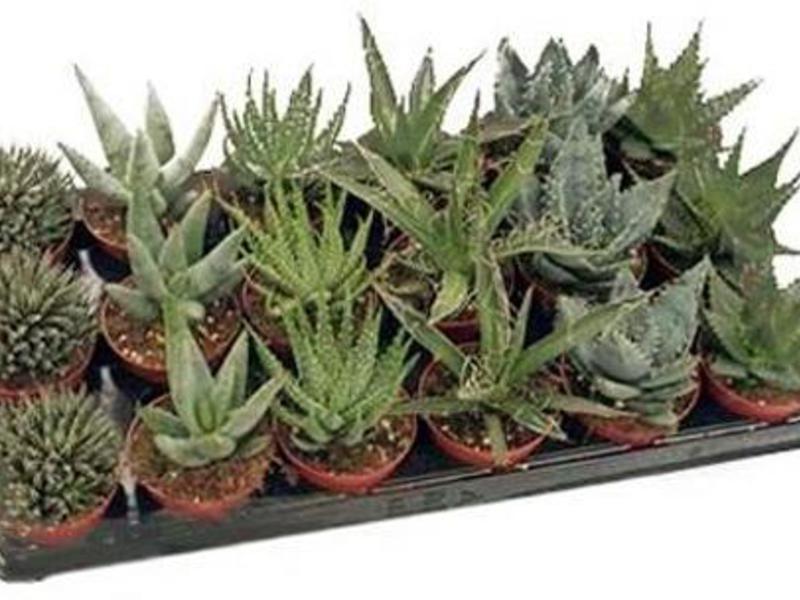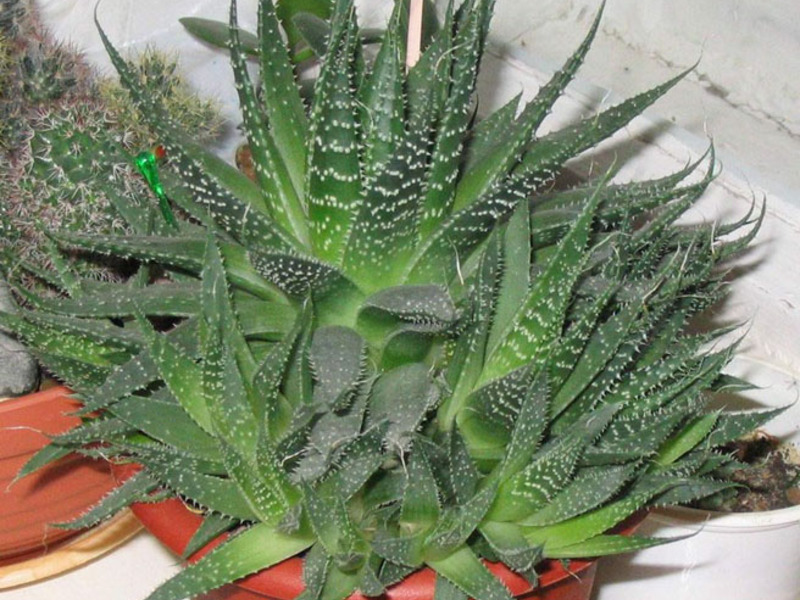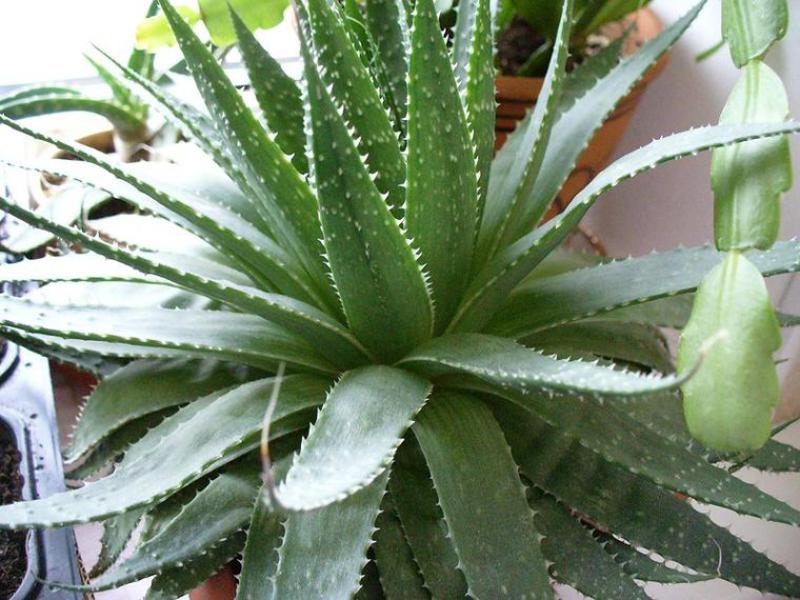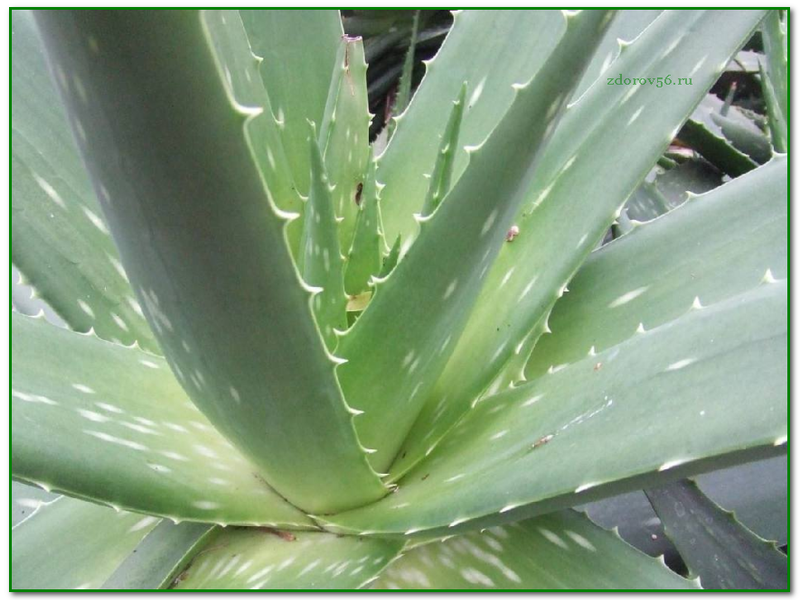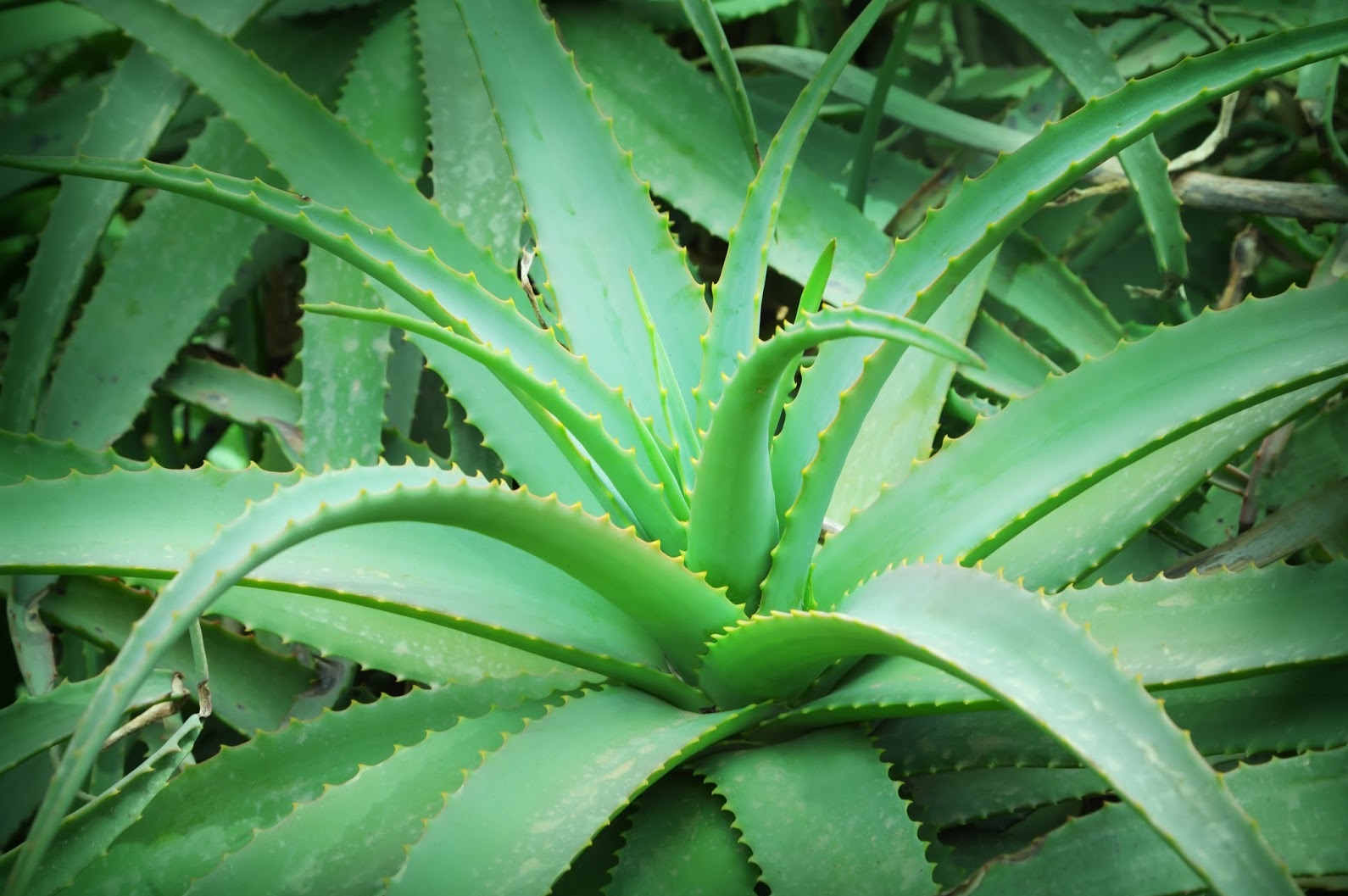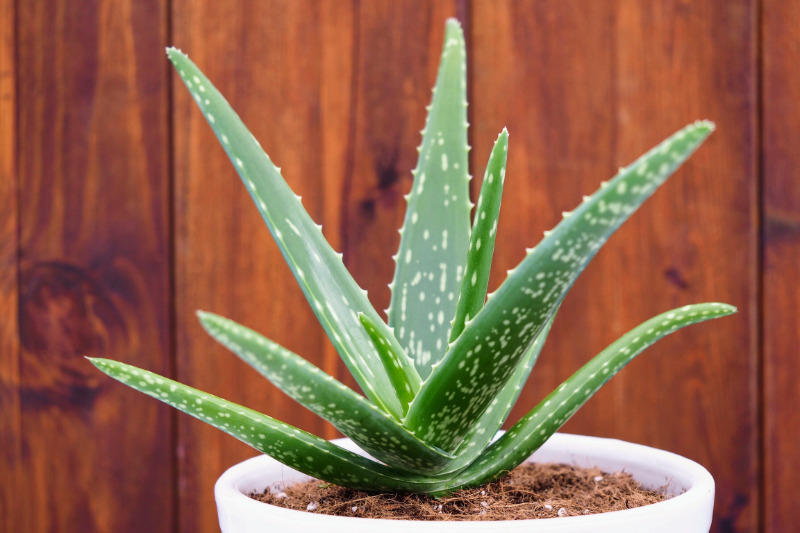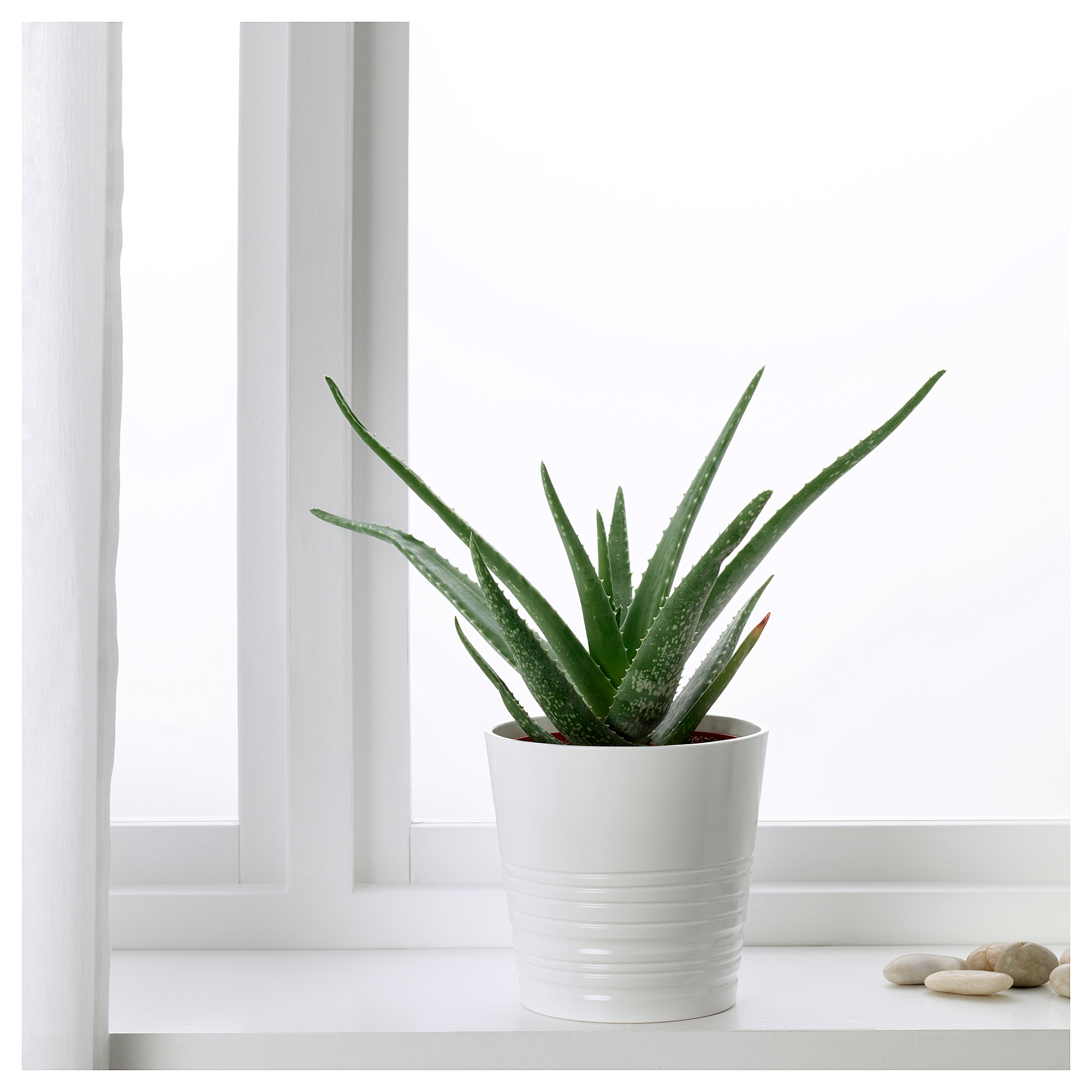 Aloe is an unpretentious plant that accumulates moisture in its fleshy leaves, thanks to which the flower is able to survive even in conditions of prolonged drought.
Aloe is an unpretentious plant that accumulates moisture in its fleshy leaves, thanks to which the flower is able to survive even in conditions of prolonged drought.
There are more than 300 species of aloe in the world, growing both in the wild and at home. The homeland of the flower is the Arabian Peninsula, South America, Africa, Madagascar. The height of individual representatives of this plant reaches as much as 15 meters!
At home, aloe blooms very rarely, but in nature, you can often observe its specific flowering. First, the fleshy leaves release a long arrow from their rosette, from which then appears spike-shaped flower with tubular petals of purple, yellow or orange.
Content
Aloe species
As a rule, aloe is grown as a medicinal plant, but breeders have bred many ornamental varieties that differ in interesting leaf color and unusual forms.
The most common types of aloe
Popular varieties include:
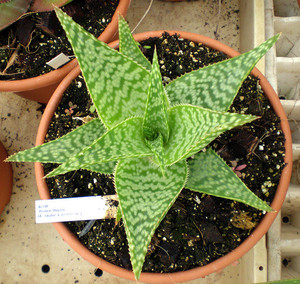 Variegated aloe. A bushy plant without a stem. Bush height 25 - 30 cm has root shoots, which form groups of rosettes of long leaves. dark greenish-brown leaves are decorated with a white striped or spotted pattern. In summer, erect racemose inflorescences of a yellow, fiery red or pink shade of 25 - 30 cm in size appear from a leaf outlet, there can be from 2 to 6 pieces. Aloe grows Variegated in the arid regions of South Africa.
Variegated aloe. A bushy plant without a stem. Bush height 25 - 30 cm has root shoots, which form groups of rosettes of long leaves. dark greenish-brown leaves are decorated with a white striped or spotted pattern. In summer, erect racemose inflorescences of a yellow, fiery red or pink shade of 25 - 30 cm in size appear from a leaf outlet, there can be from 2 to 6 pieces. Aloe grows Variegated in the arid regions of South Africa.- Folded or fanned aloe... It is a tree-like or bush-like plant with a lignified branched stem 3 - 5 m high. The top of each branch has a large rosette, consisting of 12 - 13 fan-shaped ribbon-like opposite leaves of greenish-gray color. Their edges are weakly serrated or smooth. It grows in the rocky regions of South Africa.
- Marlot. It is a non-branching tree-like plant, the height of which reaches 4 m at the top of aloe, broad-lanceolate fleshy leaves with thorns on both surfaces and edges, flowers of an orange hue. Marlota grows in South Africa.
- Squat. A small herbaceous perennial with linear-lanceolate leaves of a greenish-gray or bluish-green hue, along the edges of which there are white teeth, and on the surface there are light papillae. The inflorescence consists of red or orange flowers, 3 s long. grows in South Africa.
- Dichotomous is a tree-like plant with a branching crown and a thick trunk. Leaves with small thorns along the edges, bluish-green linear-lanceolate. The flowers are yellow. Grows in Southwest and South Africa.
- Strongly branched... It is a small (up to 2 m), strongly branching plant with yellow flowers. A distinctive feature of this species is that it is able to withstand fairly low temperatures and can grow outdoors until late autumn. In hot weather, highly branched aloe needs a little shading. The homeland of the plant is South Africa.
- Variable in appearance similar to the previous plant, but smaller in size. Has two-tone brushes.
- Cap-shaped - herbaceous perennial with creeping stems (1 - 2 m). Leaves are bluish-gray or green in color, juicy, ovoid, with yellow or white denticles along their edges, and thorns on the underside. The flowers are dark scarlet. Homeland - South Africa.
- Pretty little. It is a herbaceous perennial plant with narrow, dark green leaves covered with warts or white spots, small thorns along the edges. The flowers are bell-shaped. Homeland - Central Madagascar.
- Spinous - bushy plant with numerous narrow leaves of gray-green color with white blotches, at the top of the leaf - a long awn. The flowers are orange-red, tubular. Grows in the eastern regions of South Africa Lesotho. Cultivated as a house plant, used as a medicinal product.
- White-flowered. It is a bushy plant that does not have a stem. Leaves are linear-lanceolate, gray-green, with white dots, along the edges - light teeth. The flowers are tubular, white. Homeland - Madagascar.
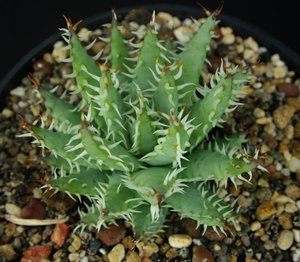 Aloe Jackson - a perennial bush with a small stem (0.25 m). Leaves are light green with small specks, covered with bloom. Along the edges there are small teeth, at the end there is a thorn. The flowers are red, tubular. It grows in Somalia and Ethiopia.
Aloe Jackson - a perennial bush with a small stem (0.25 m). Leaves are light green with small specks, covered with bloom. Along the edges there are small teeth, at the end there is a thorn. The flowers are red, tubular. It grows in Somalia and Ethiopia.- Aloe Desconigs. It is a herb with a short stem. The leaves are elongated, triangular in shape with waxy tubercles and white spots. The flowers are orange, tubular. Homeland - Madagascar.
- Aloe black thorny. It is a herbaceous perennial, 0.5 m high, without a stem. The leaves are dark green deltoid in shape. There are thorns on the underside of the leaf. The flowers are red. Homeland - South Africa.
- Hawortievidnoe Is a stemless plant with gray-green leaves and white papillae. Flowers are white or light pink. Homeland - Central Madagascar.
- Arranged. It is a herbaceous perennial with a creeping stem, giving long shoots (up to 2 - 3 m). The leaves are wide, ovoid, bluish-green in color, with yellow thorns along the edges. The flowers are dark scarlet. This species is native to Southwest Africa.
Medicinal types of aloe
It has somehow become customary for us to grow at home aloe tree - a perennial leafy plant, an indispensable assistant for non-healing wounds and a cold. We perceive other species of this desert inhabitant only as decorative and unpretentious succulents. But besides the aloe tree, there are other species that can also be used as a home doctor.
 Soap aloe is a perennial with a short (up to 0.5 m) stem or without it at all. Leaves are dark green with white spots, lanceolate. On the edges are brownish thorns. The flowers are orange, red, pink or yellow. Homeland - South Africa.
Soap aloe is a perennial with a short (up to 0.5 m) stem or without it at all. Leaves are dark green with white spots, lanceolate. On the edges are brownish thorns. The flowers are orange, red, pink or yellow. Homeland - South Africa.- Aloe Barbados. It is a bushy perennial with a shortened stem and many side shoots. There are small thorns along the sharp-toothed edges of slightly corrugated lanceolate leaves. The leaves of the plant are greenish-gray, sometimes with white blotches of color, the edging is pinkish. Aloe Barbados is widely used in cosmetology and is grown as a house plant.
- Aloe tree (agave). It is a shrub or tree-like branching plant with a height of 2 - 4 m. leaves are xiphoid, juicy enough, have small teeth at the edges. The flowers are yellowish-orange, pink or fiery red. It grows in tropical and South Africa. It is also widely distributed as a houseplant. Since this type of aloe blooms once every hundred years, it was named "agave".
- Awesome aloe. It is a powerful plant with a single erect stem, which, under favorable conditions, can reach up to three meters in height. At the top of the plant there is a rosette consisting of bright green (sometimes reddish) lanceolate leaves.The plant received such an original name due to the red-brown thorns along the edges, and occasionally on both surfaces of the leaf, the length of which is about 6 mm from the center of the rosette, an inflorescence begins to develop, having from 5 to 12 brushes. Inflorescence height 50 - 80 cm occurs in late spring. The flowers are reddish-orange in color (sometimes yellow or white), tubular in shape. The juice of this plant is widely used in pharmacology and cosmetology. Aloe is a fearsome native to the arid regions of South Africa and Lesotho.
- Aloe Sokotrinskoe This species is native to the island of Socotra (southern Yemen). Sometimes Sokotrinskoe aloe is considered as a type of aloe intimidating.
Medicinal properties and contraindications
The healing qualities of aloe have been known since ancient times, when healers drove out various diseases with the help of medicinal plants. Although the properties of aloe have not yet been fully understood, the miraculous power of this flower is recognized even by official medicine.
The healing power of aloe is due to the large number of substances that can intensify recovery processes in the human body:
 essential oils;
essential oils;- antioxidants;
- beta carotene;
- vitamins of group PP, E, C, A, B;
- phytoncides;
- allantoin;
- enzymes;
- polysaccharides;
- styrenes;
- glycosides;
- molar substances, etc.
Immunity
Aloe is great tonic and general tonic... This is explained by the unique chemical composition of this plant. Regular intake of aloe juice helps to strengthen the body's natural defenses against various infections and bacteria.
This is especially true during an exacerbation of colds caused by a lack of vitamins and bad weather (spring, autumn). The healing properties of the agave are used not only in the fight against infectious diseases of the respiratory tract.
Aloe is widely used in cosmetology and pharmacology. It can be taken orally or with juice to lubricate the wounds and make compresses.
The plant is excellent copes with skin diseases... This natural antiseptic has proven effective in treating cuts, burns, acne, boils, purulent inflammation and ulcers. With eczema and dermatitis, the agave soothes the skin and helps relieve inflammation.
Manufacturers of numerous skin balms and creams use aloe for the following properties:
- restoration, nutrition and softening of the skin;
- UV protection;
- narrowing of pores.
Contraindications
 You can not use the agave inside if you are pregnant, as it can provoke a miscarriage.
You can not use the agave inside if you are pregnant, as it can provoke a miscarriage.
Patients with stomach ulcers and gastritis are also not recommended to take medications that include aloe. This causes irritation of the gastrointestinal tract.
Since the agave contains substances that provoke an exacerbation of inflammatory processes in the kidneys and bladder, and can also cause uterine bleeding, preparations based on aloe can not be used for diseases of the genitourinary system.
Despite the fact that the agave is a desert inhabitant, it has become widespread throughout the globe due to its unusual properties. This "home doctor" will always come to our aid, and therefore every home must have aloe. The flower does not require any special care and special conditions, but you will get a first-aid kit for all occasions.
